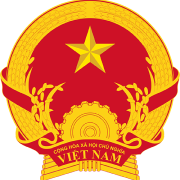
4G will dominate 3G in Lung Cu
Head of the Viettel Ha Giang Technical Centre Luu Van Tuyen who is responsible for the management and installation of BTS stations said that at the time of the 4G roll-out on April 18, 35 BTS stations had been installed in Dong Van district and 25 stations had been installed in Meo Vac district, ensuring the coverage of 4G signal in the area.
At the Lung Cu flagpole in Dong Van district, the nation's northernmost point, 4G download speed reaches 80-105 Mbps and uploading speed reaches 40-50 Mbps. Ha Giang province is set to have a number of 367 4G BTS stations on an area of 8,000 km2 which is higher than the current number of 2G stations (350 stations) and 3G station (355 stations).
On April 18, while Viettel technical teams were installing 4G stations, sales teams were actively working with customers to convert 2G and 3G SIMs to 4G SIMs. On the market in Sa Phin commune, Dong Van district, many Mong ethnic minority people were eager to learn about the new technology.
Vuong Mi Cha, a Mong ethnic man, said he had been a 3G user for several years which was very convenient for him to learn about farming practices and search for opportunities to sell goods. "Now, 4G is more modern with better signal, so I will convert my 3G SIM to 4G for better service", Cha said.
Director of Viettel Ha Giang Lai Nhu Hoa said that Viettel had upgraded 31,000 SIMs to 4G SIMs by April 14, including 6,500 SIMs registered in Vi Xuyen district and 5,000 SIMs registered in Ha Giang city, among others. Despite being a disadvantaged province with 40% of poor households, easy access to information through new information and communication technology has contributed to gradually changing the life of local people in Ha Giang for the better, Hoa noted.
"Viettel Ha Giang has more than 400,000 mobile subscribers, accounting for 62% of the total mobile market share with about one third of subscribers using 3G service," Hoa said.
"We have set a target that Viettel Ha Giang will have approximately 140,000 4G subscribers by the end of this year, up 12% compared to the current number of 3G subscribers. Viettel will co-ordinate with local authorities to bring 4G support devices with preferential prices to the province to stimulate the use of 4G and assist the local administration in applying information technology to governance activities", Hoa added.
No one is left behind
It can be said that Viettel has recorded a terrific speed in establishing 4G infrastructure with the wide coverage of 4G signal with much faster speed. While Viettel took 10 years to install 25,000 2G stations covering 95% of the population and eight years to install 30,000 3G stations covering 95% of the population, it took only six months to install 36,000 4G stations covering 95% of the population.
"At the time of launching 36,000 4G stations, Viettel has provided 4G coverage to 100% of districts across the country. With wide, extensive and continuous coverage of 4G, Viettel believes that anywhere in Vietnam will have access to Viettel's 4G services," Viettel Deputy General Director Tao Duc Thang said.
With wide area of coverage including a large area in rural and mountainous regions, Viettel aims to ensure 90 million Vietnamese people have access to the internet.
"4G coverage in 100% of districts means that operations and consultations can be instructed directly from central hospitals, opening up survival opportunities for thousands of people. It also opens up opportunities for a lot of students in remote areas to study as urban students. 4G will also contribute to administrative reform and help the government get closer to the people. Regarding enterprises, 4G will be the foundation for creating a multitude of new services and products that old technology failed to facilitate. For Viettel, 4G is the perfect addition to the wide array of services that Viettel is providing such as applications in the health and education sectors, smart cities and e-government services, among others," Thang noted.
Thang added that the investment in 4G demonstrated Viettel's commitment that by 2020, every Vietnamese citizen will have a smartphone with access to the internet for entertainment, study and employment. This investment also represented the vision of Viettel under which smartphones and mobile broadband are an opportunity for developing countries.
Telecom services narrow the distance between rural and urban areas and between the rich and the poor in a short period of time as the costs for mobile devices and internet access via telephone have decreased 10 times compared to internet access via fixed broadband, bringing about opportunities for many people.
Thang stated that telecom services are not limited to only telecommunication anymore, they have infiltrated into information technology, into applications, into education and healthcare, and into all areas of social life.
